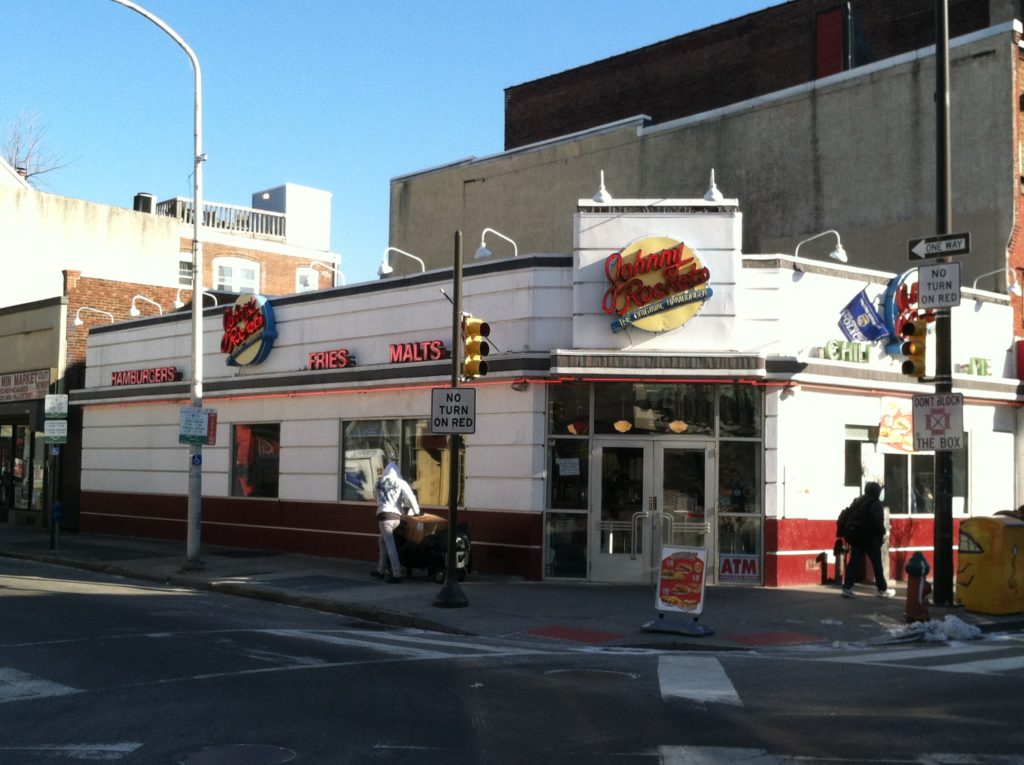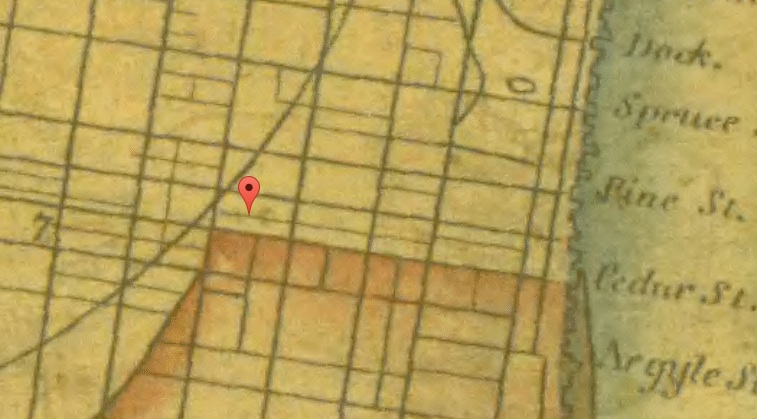The northeast corner of 5th & South has come to reflect the identity of its surrounding neighborhood at various points in history, beginning as far back as 1775. This is when, according to the Library Company of Philadelphia, English gentleman Charles Hurst erected his estate. At this juncture, according to The Black Bottom, South Street was known as Cedar Street and was the southernmost boundary of the city proper. Old Cedar Street is shown here below in an image taken from John Hills map of Philadelphia and Vicinity.
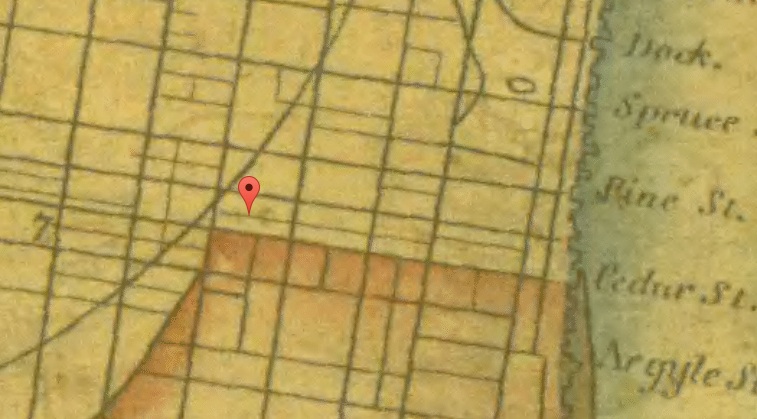
Baron Hurst, as he was also known, possessed a wealth of land in Society Hill during the Revolutionary Era but the Mansion served as his primary residence. The watercolor painting below is taken from the Historical Society of Pennsylvania and shows the estate as it would have appeared in 1817.
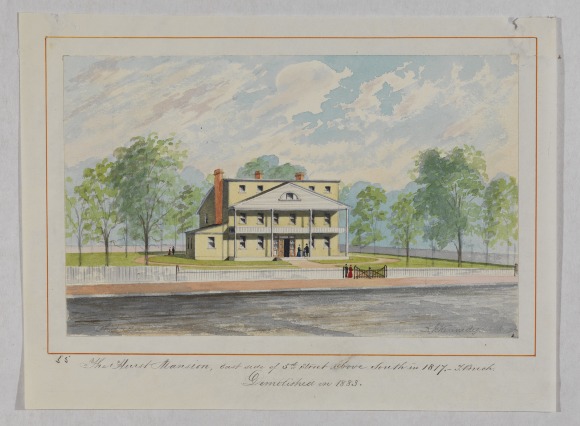
According to The Black Bottom, Southwark would be absorbed by Philadelphia in 1854, at which point Cedar Street would be rechristened as South Street. By this time, the Hurst Mansion had passed out of the hands of its titular family. According to the Free Library of Philadelphia, the once stately mansion was being used as a storage grounds for its occupants at this time. The Free Library notes that the lands directly west of the mansion had been used as burial grounds during the Revolutionary era. As the image from 1858 shows, the front yard of Mansion had become a receptacle for the gravestones from the now defunct cemetery as well as a parking lot for W.B. Chambers’ Grocer wagon.
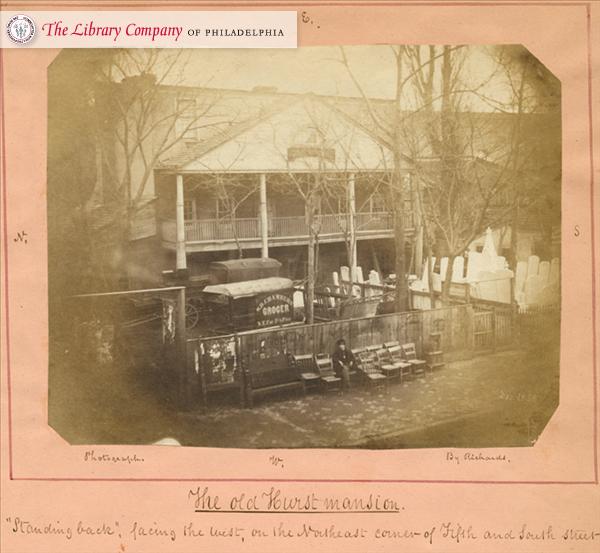
The Free Library tells that the mansion would become a tavern for a brief period thereafter, though details on said tavern are scant. According to the Historical Society, the building would be demolished in 1883. In the coming decades, the makeup of South Street would shift dramatically. The swelling immigrant populations brought a new cultural identity to the surrounding neighborhoods, with Jewish, Irish and Italian enclaves producing their own thriving economies. The intersection of 5th and South fell right in the heart of the burgeoning Jewish quarter and its specialized expertise in fabrics, tailoring and dressmaking. By the early 20th century, the area would be renowned for its clothing retail opportunities. The image below, taken from the Philadelphia Department of Records, shows the former location of Hurst Mansion in 1930, where it appears an establishment called Spiegel’s Furs has set up shop.
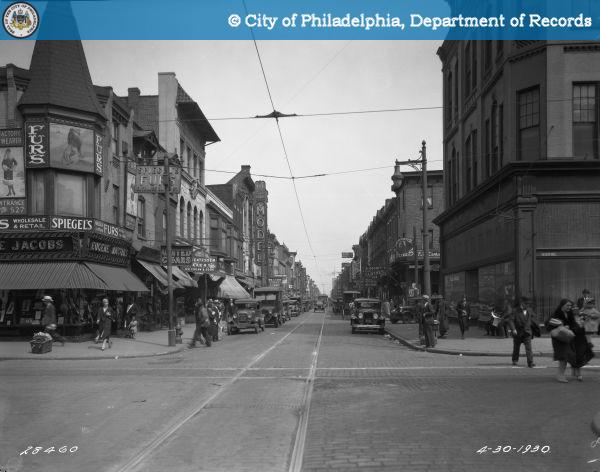
Today, the northeast corner of 5th & South is listed as 443 South St. and the only apparel you can get there are paper hats. Johnny Rockets offers a 1950s themed diner experience and vaguely proclaims to be the home of “The Original Hamburger.”
